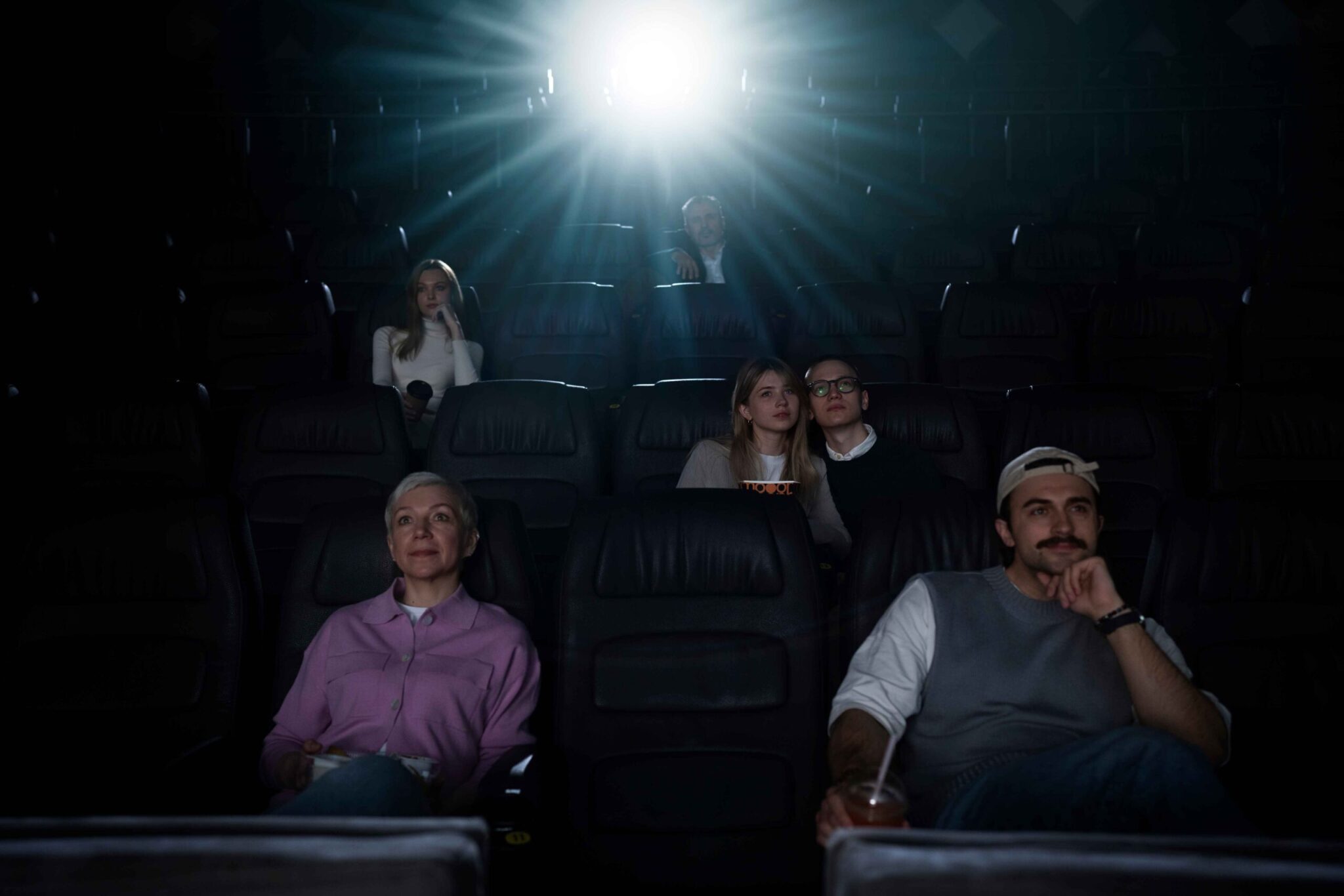THE EVOLUTION OF FILM AND TELEVISION: A JOURNEY THROUGH TIME
Introduction
Films and Televisions have long been staples of entertainment, shaping our culture and reflecting our society’s values, interests, and aspirations. This dynamic duo has evolved significantly since their inception, influencing not only the world of entertainment and but also the way we communicate and connect with another. Films and Televisions have revolutionized the way we entertain, inform, and connect with the world around us. These two mediums have become an integral part of our daily lives. From the silver screen’s epic tales that transport us to distant land and eras to small screen’s intimate portrayal of everyday life, films and televisions offers a diverse array of experiences that cater to a wide range of tastes and interests. In this digital age, they not only entertain us but also educate, challenge our perspectives, and serves as a powerful means of storytelling. This introduction explore the enduring impact of films and society on our society, highlighting their roles as influential forms of art, entertainment, and communication.

The Birth of Cinema
The story of films begins in the late 19th century when the inventors like Thomas Edison and the Lumiere Brothers introduces the concept of moving pictures. Edison’s invention, the Kinetoscope, allows viewers to watch short films individually, while the Lumiere brothers, cinematograph made the communal screenings possible. The first public screenings of the motion picture took place in 1895 in Paris, marking the birth of cinema as we know it. The birth of cinema marks a profound turning point in the history of human expressions and entertainment. It was a revolutionary moment that gave a birth to entirely new medium of artistic and visual storytelling. At the end of the 19th century and the Dawn of the 20th century, inventors, pioneers, and visionaries embark on a journey that would forever change how we perceive, document, and communicate the world around us.
Through a fascinating display of technological innovation, artistic experimentation, and entrepreneurial spirit, cinema emerged as a transformative force that transcended boundaries of time, language and culture. This introduction delve into a remarkable genesis of cinema, a phenomenon that captivated the collected imagination that laid the foundation of one of the most influential and cherished art forms of our time.

Silent Cinema Era
The early days of films we dominated by silent cinema, where storytelling relied heavily on visuals, body language, and intertitles. Pioneering filmmakers like DW Griffith and Charlie Chaplin honed their craft during this period. Griffith’s ” The birth of nation ” (1915) was a groundbreaking world of storytelling, how it is now criticized for its racist content. The Roaring twenties brought a surge in creativity, with experimental films like “Metropolis” (1927) showcases stunning visuals and innovative special effects. However, the silent era soon gave way to the “talkies” with “The Jazz Singer” (1927) starring AI Jolson heralding the advent of synchronized sound in film. The silent cinema era stands as a remarkable chapter in the history of filmmaking, characterized by its unique ability to convey powerful narratives without the spoken world. Emerging in the late 19th century and thriving well into the 1920s the period of a cinematic innovation captivated audiences around the world. Silent films, accompanied by lives music and intertiles, transcended linguistic boundaries and sport to the universal language of human emotions.
During his era, pioneering filmmakers and actors pushed the boundaries of storytelling, mastering the art of visual storytelling through inventive cinematography, elaborate sets, and captivating performances. As we journey back to the days of flickering black and white screen, we explore the silent cinema era, a time when the absence of sound led to the creation of cinematic masterpiece that continues to inspire and captivate audiences to this day.

The Golden age of Hollywood
The 1930s to the 1950s are often regarded as the Golden Ae of Hollywood. It produced iconic films and stars such as, “Gone with the Wind”(1939) and the Charismatic Marylin Monroe. Studio like MGM, Paramount, and Warner Bros. dominated the industry, and the Oscars become a celebrated event. The golden age of hollywood is glittering chapter in the annals of cinema, a period when dreams were spun into celluloid and the silver screens and illuminated with the imagination of audiences around the world. Spanning roughly from the late 1920s to the early 1960s this era was marked by a confluence by a artistic creativity, technological innovation, and the emergence of legendary stars. The studio of hollywood churned out a dazzling of iconic films, from epic dramas to musical extravaganzas, and introduces audiences to some of the most enduring and beloved cinematic characters in history. It was a time when Hollywood reigned supreme as the global hub of entertainment, and the industry set the standard for storytelling, fashion, and culture influence.
In this exploration, we journey back to the halcyon days of The Golden Age of Hollywood, a time when the magic of the movies captured the hearts and minds of millions and left an indelible mark on the art of filmmaking.

The Television Emergence
While film was thriving, television was making its own strides. The 1950s saw the mass adoption of television sets, allowing families to gather allowing the living room and tuned into shows like “I Love Lucy” and “The Twilight Zone”. Television brought entertainment into homes on a daily basis, changing the dynamics of storytelling. The emergence of television heralded a transformative moment in the history of media and communication, reshaping the way we receive and interact with information and entertainment. Emerging in the mid-20th century, television quickly established itself as a powerful medium with the capacity to broadcast images and sounds into the homes of millions, connecting people across vast distances in unprecedented ways. This breakthrough technology not only altered the daily routine of households but also revolutionized how news, stories and culture were disseminated.
Television ascent’s driven by innovation and creativity, paved the way for a new era of visual storytelling, fever changin the landscapes of mass media and becoming an integral part of our modern lives. In this exploration, we delve into the captivating history of television’s emergence a pivotal moment that continues to shape our world and the way we perceive it.

The Rise of Blockbusters
The 1970s witnessed the rise of the Blockbuster film, with “jaws” (1975) and “Star Wars” (1977) revolutionizing the industry. These films set the template for big budget, high-stakes production that would become a staple of Hollywood. The rise of blockbuster in the world of cinema represent a seismic shift in the way we consume and celebrate movies. Born in the latter half of the 20th century, the concept of the blockbuster film has not only redefine the film industry but also collective cinematic experience. These high-budget, often larger than life spectacles have captivated audiences on a global scale, drawing them into immersive worlds of fantasy, adventures, and imagination. Blockbuster have transcended the confines of traditional storytelling, combining cutting-edge technology with the art of filmmaking to create unforgettable cinematic events. In this exploration, we dive into the phenomenon of rise of the blockbuster, examining the culture, economic and artistic forces that have propelled these monumental films to the forefront of contemporary cinema and made them an enduring part of our cultural landscapes.
These films have become an integral part of our entertainment lexicon, offering spectacle, excitement, and a sense of unity as viewer around the world gather to witness their release. Blockbuster are more than just movies: they are cultural phenomena that combine cutting-edge technology, grandiose, storytelling and star studded casts to create a cinematic experience like no other.

The Digital Revolution
The late 20th Century saw the transition from analog to digital technology, transforming filmmaking and television production. CGI ( Computer Generated-Imagery) become a game changer, enabling filmmaker to create astonishing visual effects. the era gave rise to beloved franchises like “Jurassic Park” (1983) and “The Lord of the Rings” (2001-2003). The digital revolution in the world of films and televisions has ushered in transformative era of storytelling and entertainment. Over the past few decades, rapid advancements in technology have fundamentally altered the way content is created, distributed, and consumed. Gones are the day of celluloid reels and analog television signals; instead we find ourselves immersed in a digital landscape that has democratized the art of filmmaking and reshaped the television industry. From the advent of Computer Generated-Imagery (CGI) that has brought fantastical worlds to life on the big screen to the proliferation of streaming platforms that offers an abundance of on-demand content the digital revolution has shattered traditional boundaries and unlock a new realm of creative possibilities.



